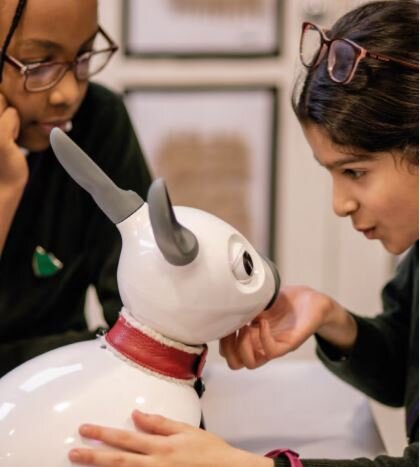Humans are social creatures. One of the consequences of the current Covid19 situation is that many of us have now experienced social isolation as the by-product of social distancing or shielding. We know first-hand how it feels and the inevitable impact it has on one’s mental well-being. It is also known that it is a significant problem especially amongst lone vulnerable and older people such as widows and widowers, who routinely live with these conditions and suffer unnecessarily as a result.
A common remedy for loneliness is to keep a pet for company, but this is not always possible for various reasons such as unsuitable accommodation and allergies. In the future it is likely that we will develop robot companions that will help us look after ourselves; they will also give some sense of reassurance that if anything critical happens, such as a fall or a stroke, help will be promptly called for. These companion devices can also help by reminding us to do things that we might otherwise forget, such as taking medicine and keeping to a regular routine. MiRo is one of the first generation of these advanced companion robots. It has a friendly animal-like appearance and behaviour that’s inspired by the simple premise that domestic animals have forms of physical, emotional and social intelligence that are familiar and desirable.
Research shows that people can be very wary and phobic towards robots - literature and media usually paint a dystopian picture of a world where robots have taken control to the detriment of humanity. Perhaps for this reason, no one instinctively likes the idea of deploying a robot to look after their aged parents. Furthermore, older people can find it difficult to engage with new technologies, therefore our approach with MiRo has been to develop an autonomous friendly, tactile and responsive device with similar looks to a small domestic animal that also behaves in a similar manner to a familiar pet.
It used to be thought that talking to oneself is was a sign of mental instability, however chatting to one’s pet is considered perfectly normal behaviour. Presumably most people chat to their pets are assuming that they understand them in some way; this is irrational as there is no evidence to show that animals can understand human language any more than I can understand Mandarin or Hungarian, but I can tell if they are happy or angry - the key difference between humans and pets is that we can learn or programme myself to understand foreign tongues. Interestingly people also chat away to the MiRo companion robot without any hesitation; the key difference is that pets generally cannot communicate effectively with human beings except to indicate their needs and possible danger.
“With the right programming and conditions, MiRo could be ‘taught’ to understand and obey spoken instructions as well as notice if things are not quite as they should be, through facial recognition and analysis of ‘body language’ and tone of voice that can indicate signs of distress. ”
In the future, with the right programming and conditions, MiRo could be ‘taught’ to understand and obey spoken instructions as well as notice if things are not quite as they should be, through facial recognition and analysis of ‘body language’ and tone of voice that can indicate signs of distress. This could be augmented by movement detectors and through a simple worn device such as a wristband that can indicate various vital signs such as body temperature, heart and blood condition. When such a device assesses that there is a critical problem it could also promptly call for assistance - every hour spent on the floor is another day in hospital - and give friends, family or carers a good indication of what the status of the issue is, so if required emergency services can come prepared.
We are emphatically not advocating that our ageing, lonely and vulnerable people are looked after by robots, however between visits from a human carer there may be some sense of companionship and additional peace of mind for them, their families and their carers’.
What do you think? Share your thoughts by clicking the button below or joining our mailing list here.
Post Author
Sebastian Conran, Co-Founder, Consequential Robotics




